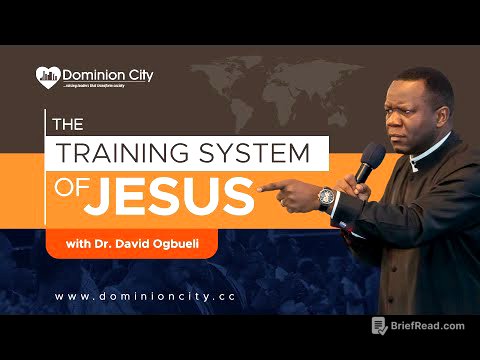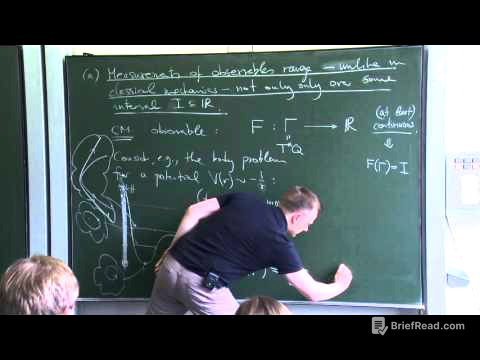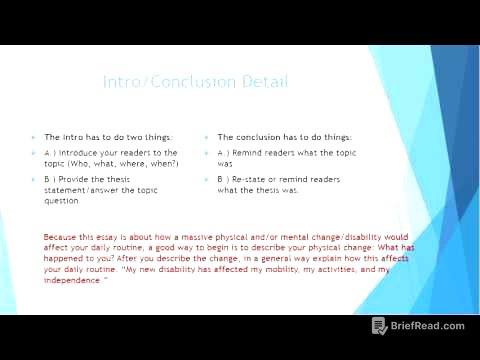TLDR;
This video is a lesson on reading the Mesnevi-i Nuriye, specifically focusing on the 6th lesson. The instructor Emine Eroğlu reviews previous lessons, emphasizing the importance of understanding and internalizing the material. The lesson covers the concepts of Tawhid (Oneness of God), the nature of existence, and how to perceive the universe as a book written by God. It also touches on the importance of recognizing God's signs in creation and avoiding attributing divine powers to created things.
- Review of Tawhid and its implications for understanding the universe.
- Exploration of how life reflects divine names and attributes.
- Explanation of the universe as a book written in handwriting, emphasizing the uniqueness and interconnectedness of all things.
- Encouragement to recognize God's signs in creation and avoid attributing divine powers to created things.
Introduction and Hasan Basri's Prayers [0:00]
The lesson begins with a greeting and a reference to Hasan Basri Hazretleri's teachings on repentance and seeking forgiveness. Hasan Basri's prayers focus on seeking forgiveness for sins, establishing a relationship with Allah, and recognizing one's shortcomings. The prayers emphasize humility, seeking blessings for Prophet Muhammad and his family, and asking for forgiveness for all believers. The speaker recites several prayers attributed to Hasan Basri, each focusing on different aspects of seeking forgiveness and establishing a connection with God.
Review of Tawhid [8:11]
The instructor transitions into a review of the concept of Tawhid (Oneness of God) from previous lessons in Mesnevi-i Nuriye. Tawhid is divided into two types: a common type and a real type. The common type acknowledges that there is no God but Allah, while the real type involves feeling oneself in the presence of Allah and connecting to the truth. The review emphasizes that Allah is one, and everything belongs to Him. The goal is to internalize these concepts so they reside in the heart.
Key Concepts from Previous Lessons [9:28]
The lesson revisits key concepts from previous discussions, including the idea that everything in the universe reflects the coin and seal of God Almighty. The concept of "Melike" is introduced, referring to the ability to do something without doubling or wasting effort. The instructor emphasizes the importance of recognizing the violet peace and Tawhid faculty in the universe. A key sentence from a previous lesson is highlighted: "God Almighty creates everything from something, from everything."
Second Lemma: Each Creature as a Sample [12:17]
The discussion moves to the second lemma, focusing on how each creature is formed as a small example of a larger concept. Each living creature is a small sample of a mosque, a collector, boiled in terms of a sweet fruit. Man is characterized as encompassing both material and spiritual worlds, with all the worlds being a sample. The essence of life is filtered and collected into a point, which is described as a door that opens to infinity.
Third Lemma: Life as a Reflection of Divine Names [18:00]
The third lemma explores how life makes transparent things a mirror to the sun's light, similar to how life makes beings transparent to divine names. When life enters a body, it becomes narrow to the divine names, allowing Provider to see the authority and Healing to enter. The instructor explains that life acts as a prism, allowing the qualities of the divine to manifest. If we do not rely on God Almighty, we will lose life and have to accept as many gods as the number of particles of existence.
Fourth Lemma: The Universe as a Book Written in Handwriting [25:44]
The fourth lemma introduces the concept of the universe as a book written in handwriting. The instructor explains that if a book is written in handwriting, only a man and a pen are needed, but if it is printed in a printing house, many tools and processes are required. The universe is like a book written in handwriting, with each being unique and reflecting the unity of Allah. The instructor emphasizes that the universe is not a mass-produced item but a unique creation.
Explanation of the Printing House Analogy [29:28]
The printing house analogy is further explained, contrasting a book printed in a printing house with one written in handwriting. The instructor notes that while a printing house produces identical copies, the universe exhibits unique characteristics in every being. The secret of oneness is reflected in both the unique creations and the similarities among beings, all pointing to the unity of Allah. The universe, therefore, is a book written in handwriting, requiring contemplation and tranquility to understand.
The Need for Spiritual Printing Houses [36:13]
The lesson goes deeper into the printing house analogy, suggesting that if the universe were not created by a single author (Allah), then each element (soil, water, air) would require its own spiritual printing house to produce the variety of life. This concept emphasizes the complexity and interconnectedness of creation, arguing against attributing the creation of life to chance or natural processes alone. The instructor stresses the importance of recognizing the "Hayrettin trace" (the trace of wonder and divine artistry) in creation.
Distinguishing Between Third and Fourth Lemas [42:12]
The instructor clarifies the distinction between the third and fourth lemmas. The third lemma focuses on life as a reflection of divine names, while the fourth lemma emphasizes the universe as a book written in handwriting. The key takeaway from the fourth lemma is that the universe is a unique creation, and each being reflects the Secret of Oneness.
Fifth Lemma: Every Letter as a Poem Praising the Creator [45:00]
The fifth lemma builds on the fourth, stating that every letter in the book of the universe is a poem praising the creator. The instructor explains that each letter, while pointing to itself in one way, indicates its pursuit with many martyrs and describes its nakkaş (artist). The universe is embodied as a chestnut book, with each word showing itself in its own amount. The instructor encourages viewers to read the universe as a letter and see the aftermath, deliberately seeking the signs of the creator.
The Meaning of the Letter and the Importance of Recognizing Signs [50:12]
The lesson explores the concept of the "meaning of the letter," emphasizing that each letter in the universe points to something beyond itself. Drawing from Fatiha-i Şerif, the instructor explains that the word "Alem" (world) is derived from the root "Alem," meaning to point. Each letter in the universe is a sign pointing to its scribe (creator). The instructor warns that if we fail to recognize these signs, all the flowers become mere objects of desire, and life fades.
Embodied Letters and Praising the Creator [55:00]
The instructor explains that every word written as a teapot is embodied, meaning it takes on a physical form. Drawing an analogy to raindrops, which are described as "embodied drops of mercy," the instructor suggests that all beings are embodiments of Allah's names. Each being appears to the object, the divine names, then they look at it, they desire, then they withdraw to the Galip world, that is, they greet and go. The instructor emphasizes that the universe is like a poem written for Efsanenet, praising the creator.
Conclusion and Homework [1:01:33]
In conclusion, the instructor summarizes the key points of the fourth and fifth lemmas, emphasizing that the universe is a book written with the side writing, and every letter is a poem praising the creator. The homework is to see the universe as a book, know its writing, and recognize each being as a letter. The instructor encourages viewers to enjoy and feel the taste of the universe, reading it with caution and turning all the lines of this book into a rosary. The lesson ends with prayers and blessings for the viewers.









